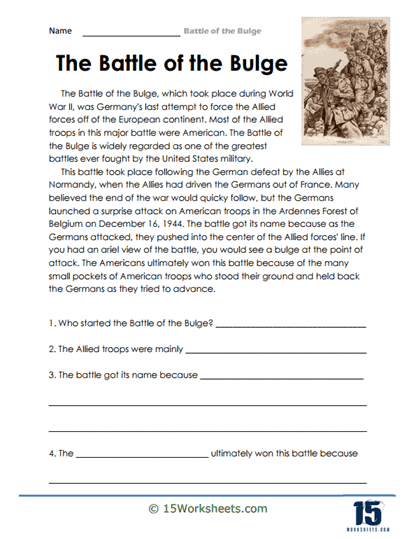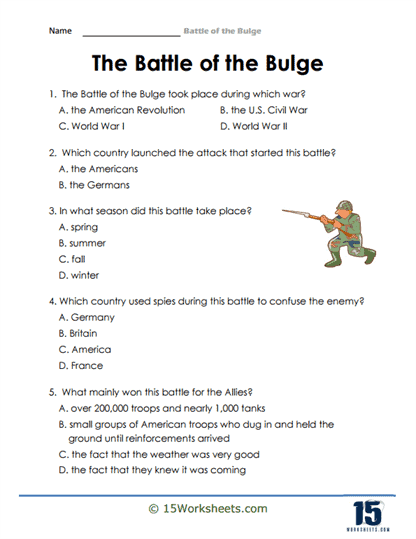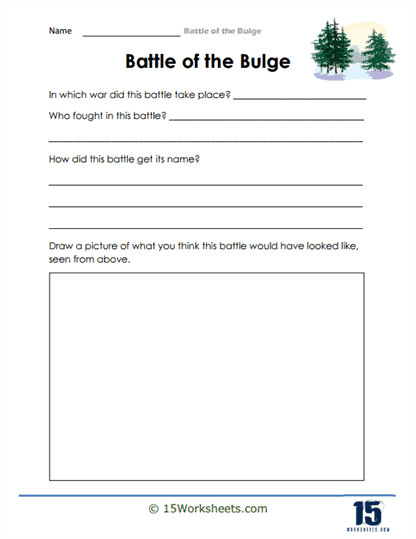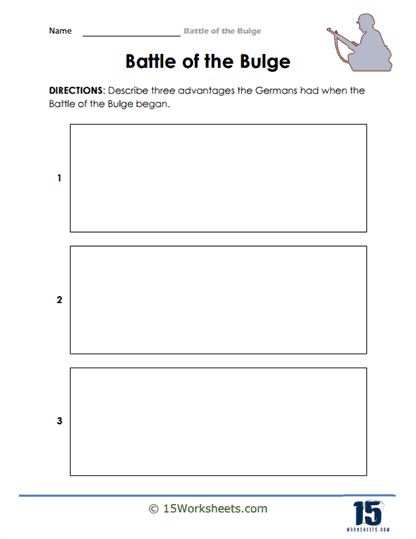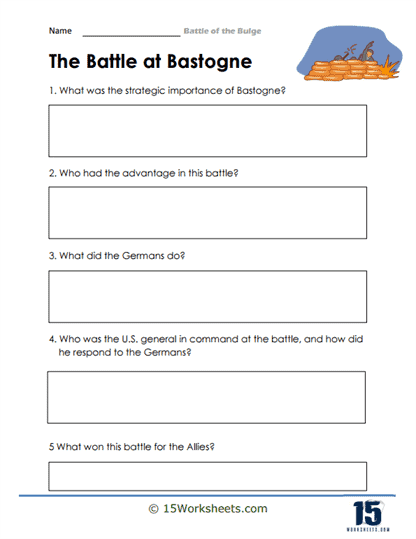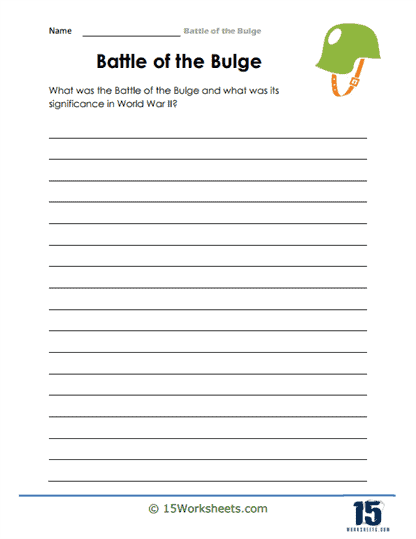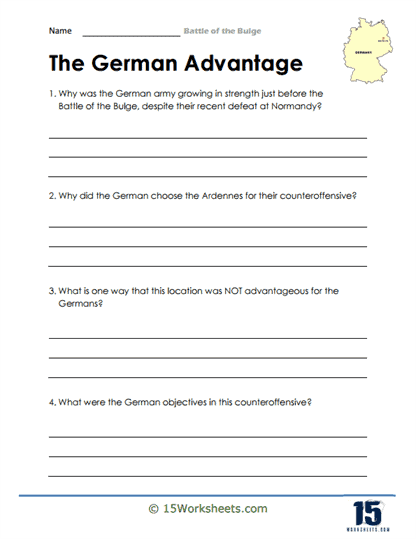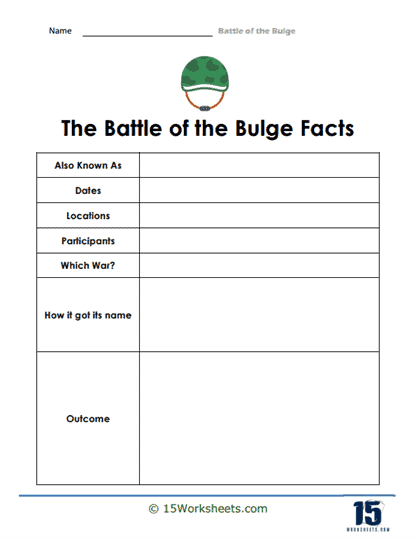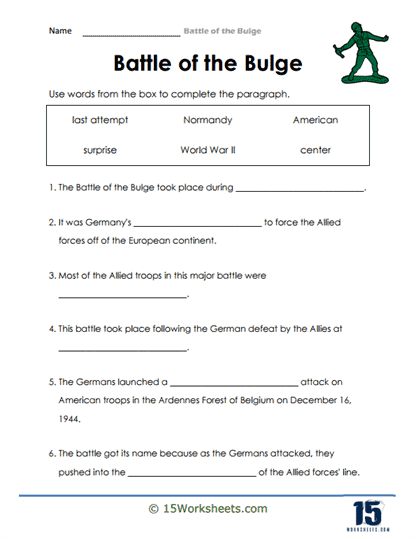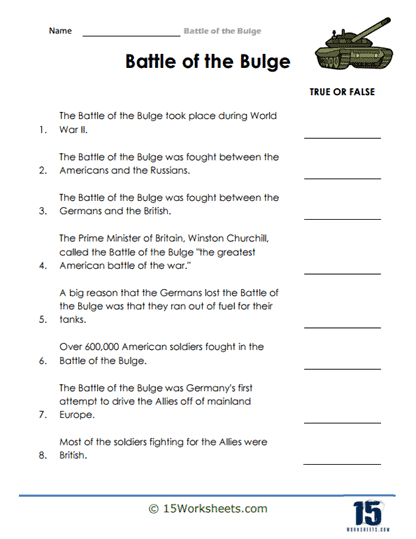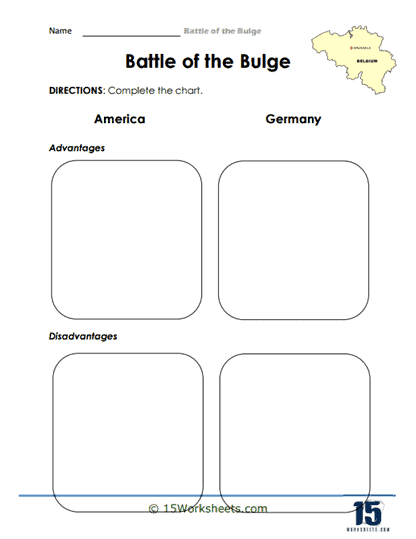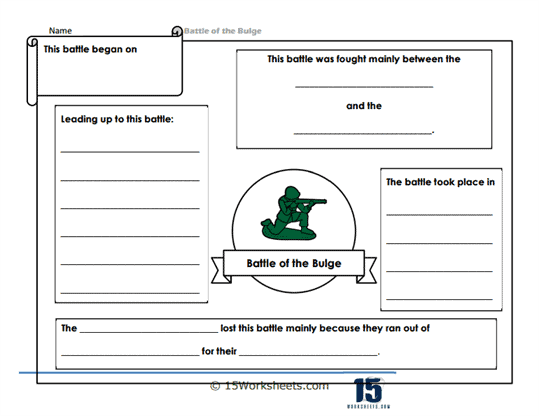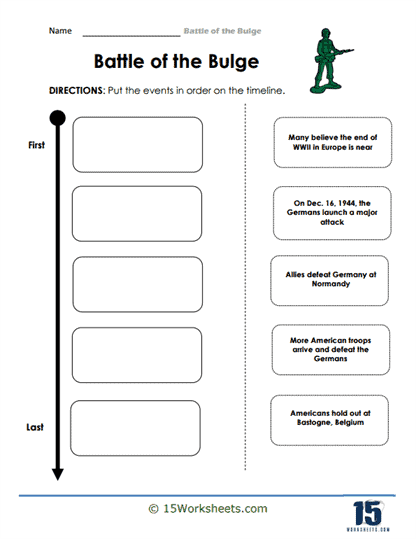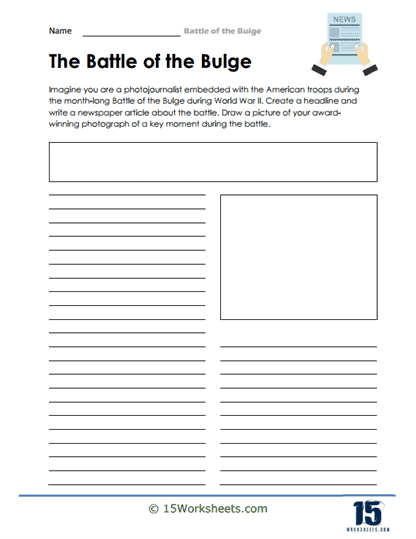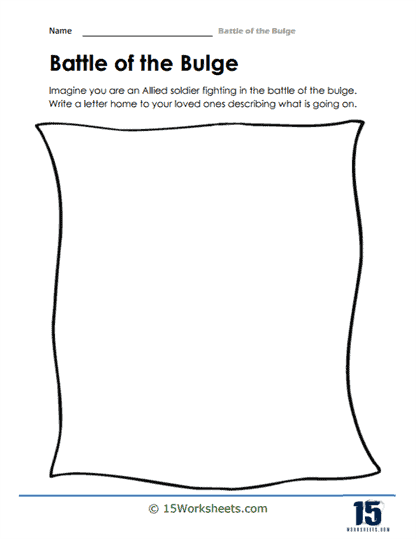Battle of the Bulge Worksheets
All About These 15 Worksheets
Students embark on an immersive journey into one of World War II’s most pivotal battles, the Battle of the Bulge, with this comprehensive series of 15 worksheets. This collection is designed to transport students back in time to explore the key events, strategies, and impact of this significant battle. Through creative activities and thought-provoking exercises, students will gain a deeper understanding of the challenges faced by both the Allied and German forces and the lasting impact of the Battle of the Bulge. Through these worksheets, students will:
- Answer comprehension questions after reading an assigned passage that recounts the events of the Battle of the Bulge;
- Test their knowledge and comprehension of the Battle of the Bulge with a set of multiple-choice and true or false questions, and a fill in the blanks exercise;
- Engage in reflective and analytical writing with thought-provoking prompts related to the Battle of the Bulge to express their insights, interpretations, and perspectives on various aspects of the conflict;
- Research and write key facts about the Battle of the Bulge, with a specific focus on the crucial engagement at Bastogne;
- Reflect on the significance of the Battle of the Bulge in the context of World War II;
- Create infographics showcasing the advantages and disadvantages of the American and German forces in the Battle of the Bulge;
- Spark their creativity by creating a news headline and writing an article about the Battle of the Bulge to capture the essence of the event and practice journalistic writing;
- And understand the chronological sequence of events by putting key events in order on a timeline.
Engaging with this series of worksheets will transport students to the historical events of the Battle of the Bulge, fostering a deep understanding of its significance, the experiences of soldiers, and its lasting impact on World War II. Through creative activities and thought-provoking exercises, students will develop critical thinking skills, empathy, and a greater appreciation for the sacrifices made during this critical moment in history.
What Was the Battle of the Bulge?
The Battle of the Bulge, also known as the Ardennes Counteroffensive, was a major battle fought during World War II between the Allies and the German forces. It took place from December 16, 1944, to January 25, 1945, in the densely forested Ardennes region, which spans Belgium, Luxembourg, and eastern France. The battle was one of the largest and bloodiest fought by the United States during the war.
In a last-ditch effort to halt the advancing Allied forces and regain the initiative, Adolf Hitler ordered a surprise counteroffensive through the Ardennes, aiming to capture the vital port city of Antwerp in Belgium. The goal was to divide the British and American forces, weakening the Allied front and forcing them to negotiate a peace treaty in favor of the Axis powers.
The German plan relied on the element of surprise and the rapid movement of their forces. Initially, the offensive achieved some success, as the Allies were caught off guard, and the Germans managed to create a “bulge” in the Allied front lines. However, several factors contributed to the eventual failure of the German offensive:
- Stubborn resistance from the Allies – American troops, despite being outnumbered and outgunned in several instances, put up a fierce resistance, notably in key locations such as St. Vith, Elsenborn Ridge, and Bastogne. The defenders of Bastogne, encircled by German forces, famously refused a German demand for surrender, delaying the enemy’s advance.
- Reinforcements and counterattacks – As the situation became clear, the Allies quickly mobilized reinforcements, and the weather improved, allowing for better ground conditions and air support. The counterattacks, led by British Field Marshal Bernard Montgomery in the north and American General George S. Patton in the south, gradually pushed the Germans back.
- Logistical issues and overstretched resources – The German offensive was hampered by severe logistical issues, including a lack of fuel, which slowed their advance and hindered their ability to maintain momentum. Additionally, the German forces were already stretched thin on multiple fronts.
By late January 1945, the German forces had been pushed back to their original positions, and the Battle of the Bulge was declared over. The battle resulted in heavy casualties on both sides, with estimates of approximately 100,000 German and 80,000-100,000 Allied casualties.
The failure of the German offensive in the Ardennes effectively exhausted their remaining resources and marked a turning point in the European theater of World War II. From that point on, the Allies steadily advanced into Germany, ultimately leading to the unconditional surrender of Nazi Germany in May 1945.

